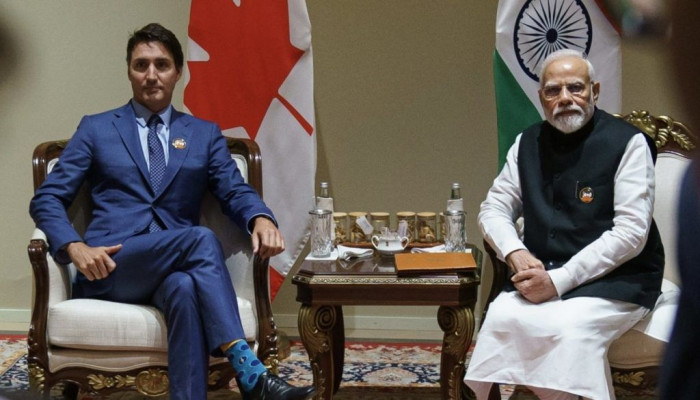If the owner goes for scrapping, he is promised a total benefit of 11per cent, including scrap compensation of nearly five per cent, discount five per cent and one per cent rebate in road tax
On March 18, 2021, Union Minister for Road Transport and Highways Nitin Gadkari announced in the Lok Sabha a “voluntary” vehicle scrapping policy which will lay the foundation for what he termed the “Voluntary Vehicle Fleet Modernisation Programme” and enable the Indian automobile industry to more than double its turnover from the current Rs 450,000 crore to Rs 10,00,000 crore in a few years. Besides, it will have a salutary effect on environment due to the mitigated vehicular pollution.
Apart from it, other benefits are expected by way of reduction in fuel consumption (as old vehicles get replaced by more fuel-efficient new ones) and cut in import bill; boost to inclusive development as investment flows into setting up scrapping and fitness centres thus creating jobs; increased safety on the roads and reduction in accidents; reining in input costs for industries such as automobile, steel, electronics, white goods and so on and increase in Goods and Services Tax (GST) collection. So, how will the Government realise it? What are its possibilities? Will the intended outcomes flow? Currently, there are 51 lakh vehicles in India which are older than 20 years while 34 lakh vehicles are more than 15 years old but less than 20 years and 17 lakh vehicles older than 15 years, but without renewed fitness certificate. Based on the premise that vehicles older than15 years are considered to be more polluting and less fuel efficient, the policy architecture is founded on two major pillars — incentivise owners of such vehicles to go for scrap and disincentivise hanging on to the old vehicle.
The owner going for scrapping will get four-six per cent of ex-showroom price of the new vehicle as compensation termed ‘scrap compensation’; five per cent discount on the purchase of the new vehicle; rebate on the road tax at the rate of 25 per cent for personal vehicles (generally, States collect this tax at four per cent, so 25 per cent rebate comes to one per cent). The policy also moots waiver of the registration fee for a new vehicle purchased on production of the ‘scrap certificate’ issued against the scrapped vehicle.
As for the disincentives, the policy suggests hike in fee for renewal of registration (Rs 5,000 for a car older than 15 years, up from Rs 600 at present) and fitness certificate renewal fees, stiff penalties for delay in renewals and imposition of the so-called ‘green tax’ by the States on such vehicles. All personal vehicles will have to undergo mandatory automated fitness test after 20 years to ply on the roads (for commercial vehicles, the threshold is 15 years). If they don’t pass, those vehicles will be de-registered and impounded by the transport authorities, pronouncing it as “end of life vehicle”.
If the owner goes for scrapping, he is promised a total benefit of 11per cent including scrap compensation of around five per cent (average of four-six per cent), discount five per cent and one per cent rebate in road tax. Against this, he can easily realise at least 15 per cent by selling. So, he won’t opt for scrapping.
Even 11 per cent incentive on scrapping is not guaranteed. Road tax being a major revenue source for States and given their precarious finances (this scenario is unlikely to change until 2024-25), they are unlikely to give any rebate. As for the balance 10 per cent, the onus is entirely on auto companies. If they don’t oblige (a lot will depend on individual firms, their cost dynamics and, in particular, how much they gain by way of reduction in cost of raw materials and components due to scrap purchase), the scale will be further tilted against scrapping.
However, a more likely scenario for the majority of old car owners is one wherein they retain it after renewing the registration. They belong to the middle or lower middle class, their resource position being pretty tight. They had financed purchase of their vehicle (albeit old) from loan. Many of them may have only recently completed servicing that loan. So, they will all go for this option. Even the increased re-registration charges and imposition of green tax won’t deter them (compare a few thousand they need to spend on paying these charges against a minimum Rs 5 lakh-Rs 6 lakh on purchase of a new car).
The policy, too, is liberal towards them. Barring vehicles owned by the Government or its agencies, panchayats and State transport undertakings and so on which have to be mandatorily scrapped after reaching 15 years of age, all personal vehicles will have to go for a fitness test only after 20 years. Those more than 15 years but less than 20 years will get the registration renewed sans test.
On balance, therefore, the policy may not prompt the owners of aged vehicles to go for scrapping on a large scale. However, things could look different — tilting the scale in favor of abandonment of old vehicles and making way for new ones — if the GST Council accedes to Gadkari’s suggestion for exempting new vehicles purchased against the scrapped vehicles from levy of the GST. At present, automobiles attract tax at the rate of 28 per cent and if this becomes zero (for those deciding to dump the old and buy new), this will be a big boost. But given the huge revenue implications, this is easier said than done.
Meanwhile, there is an order of the Supreme Court (2015) validating a National Green Tribunal (NGT) directive that prohibited petrol vehicles older than 15 years from plying in the National Capital Region (NCR) (for diesel cars, the threshold is 10 years). The order is not just a negation of the extant law which provides for registration renewal on completion of 15 years from the date of first registration but also presumes that all such cars become unfit for plying after attaining this age. Even as the policy lays emphasis on fitness rather than the age of a vehicle and is structured around incentives and disincentives, the court order militates against this. In fact, the order renders the policy infructuous in the NCR. It also creates an anomalous situation whereby the vehicle owners in other States have the freedom of choice (scrap versus retention or resale) while those in the NCR are forced to scrap their aged vehicles or resort to desperate sale and buy a new one, thereby plunging into another round of financial nightmare. The Union Government should take urgent steps to correct this anomalous situation. It may either approach the top court to relent; alternatively, bring about necessary amendment in the Motor Vehicles Act (MVA) to reflect the policy intent that is using fitness as the sole criterion irrespective of the vehicle’s age for determining whether it can be allowed to run. Concomitantly, it should go for setting up of the required network of testing infrastructure to be operated by trained manpower having impeccable credentials so that scope for malpractices and corruption is completely eliminated and only those vehicles which pass the test — as per specified norms — are allowed.
As regards the scrapping of old vehicles and making way for new more fuel-efficient and less polluting vehicles on the intended scale, it should endeavour to make the incentives more attractive. Giving exemption from the GST could be the way forward.
The writer is a New Delhi-based policy analyst. The views expressed are personal.








 OpinionExpress.In
OpinionExpress.In















Comments (0)